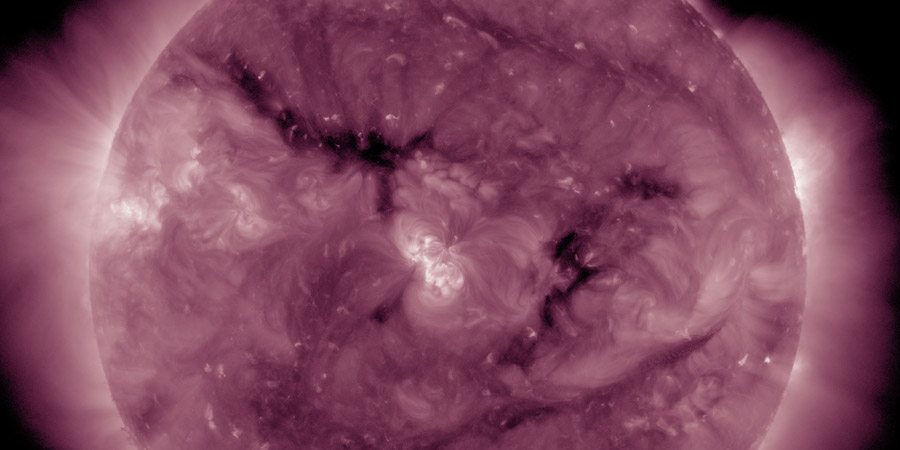NOAA G2 watch, April Fools
Saturday, 2 April 2016 12:47 UTC

There is a lot of hype at the moment as the NOAA SWPC issued a watch for possible moderate G2 geomagnetic storming conditions today. This is in response to a coronal hole solar wind stream that is supposed to arrive at Earth today. The solar wind density is currently rising so we might be seeing the first effects of this stream right now.
But back to the G2 watch from the NOAA SWPC. We have to be honest here and put some of you with both feet back on the ground as we are seeing a lot of hype around the internet at the moment. Our opinion on this matter is, is that there is no reason to believe that we will see geomagnetic storm conditions of the G2 level today. When this coronal hole faced Earth last month, we experienced strong G3 geomagnetic storm conditions on March 6th, but we still believe that this was caused by a stealth coronal mass ejection passage. The coronal hole solar wind stream that followed later was considerably weaker. If we take a look at SDO images from three days ago (see header image) we only see two very minor coronal holes which are unlikely to push us towards a G2 geomagnetic storm. STEREO Ahead also didn't record values which suggests that G2 conditions are a real possibility.
We have to understand NOAA as well as it is understandable for them to issue this G2 watch as there was a lot of debate last month if it was a CME that caused those G3 conditions or if the coronal hole caused it. For NOAA it's better to be safe than sorry and they should warn their customers about a possible repeat. As far as our judgement goes, we went with the coronal mass ejection theory and absolutely do not expect a repeat of the geomagnetic conditions from March 6th. Enhanced geomagnetic activity can still occur in the hours ahead but right now we think it is unlikely that we will reach the G2 geomagnetic storm level today. For more information regarding the events around March 6th, be sure to read our news articles here and here.
It is of course well worth your time to keep an eye on the data in the hours ahead to see how this is going to pan out, but we just have to be honest here and warn everyone to not automatically expect a grand show tonight just because they saw Kp6 in a forecast somewhere.
April Fools
Yesterday it was April 1 and in many locations around the world means that it was April Fools, the day in the year that people pull pranks on each other. We are a funny bunch here on SpaceWeatherLive so of course we also came up with a prank. This year we claimed that scientists invented a solar panel that would work with the dim light of the Aurora Borealis. This is unfortunately not true but who knows... it might be true one day. Missed our prank? No worries, you can still see it by following this link.
Thank you for reading this article! Did you have any trouble with the technical terms used in this article? Our help section is the place to be where you can find in-depth articles, a FAQ and a list with common abbreviations. Still puzzled? Just post on our forum where we will help you the best we can!
Latest news
Latest forum messages
Support SpaceWeatherLive.com!
A lot of people come to SpaceWeatherLive to follow the Solar activity or if there is a chance to see the aurora, but with more traffic comes higher costs to keep the servers online. If you like SpaceWeatherLive and want to support the project you can choose a subscription for an ad-free site or consider a donation. With your help we can keep SpaceWeatherLive online!
Space weather facts
| Last X-flare | 2025/06/19 | X1.9 |
| Last M-flare | 2025/10/03 | M1.2 |
| Last geomagnetic storm | 2025/10/03 | Kp5 (G1) |
| Spotless days | |
|---|---|
| Last spotless day | 2022/06/08 |
| Monthly mean Sunspot Number | |
|---|---|
| September 2025 | 129.8 -3.7 |
| October 2025 | 145.3 +15.5 |
| Last 30 days | 132.1 -0.4 |





